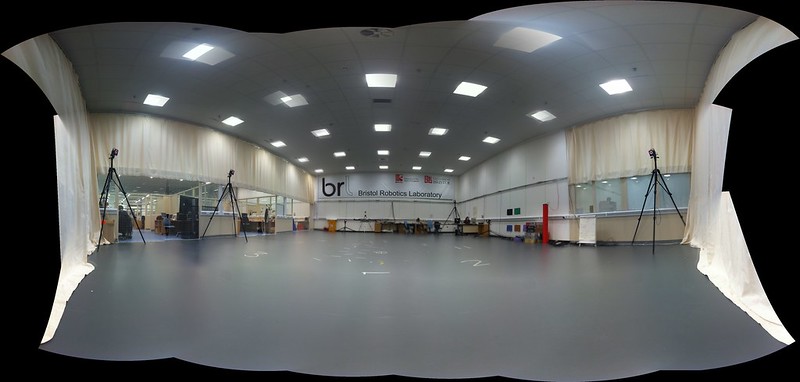In 2014, the Bristol Robotics Lab (BRL) will be launching a new Centre for Doctoral Training in robotics and autonomous systems. The Centre will offer a joint PhD degree run by BRL's two partner universities, the University of Bristol and the University of the West of England. The Centre is funded by EPSRC following their CDT 2013 competition.
The new CDT is entitled "Future Autonomous Robotic Systems Centre of PhD Education" - FARSCOPE. In time FARSCOPE will have its own website with full information on the programme and how to apply. Until then, the latest information and news for prospective students will be found here.
Theme
FARSCOPE is all about making robots more adaptable. Instead of doing the same jobs over and over in large factories, they'll help us in our homes, work alongside us in small businesses, and deal with hazardous situations while we keep a safe distance. To make all this happen, we face three challenges:
- robots being part of society, interacting with people, machines or other robots, and handling all their unpredictable behaviour
- robots operating in uncertain environments, sensing, mapping and moving where existing maps and plans are inaccurate or unusable.
- requiring different roles of robots with regular changes, for small batch jobs in small businesses where two days downtime to reprogram isn't an option.
Together, these challenges make up our theme of adaptability. The technologies involved are diverse and the applications are many, but anything to do with the three challenges above is within the remit of FARSCOPE.
Programme
FARSCOPE enhances the "traditional" PhD content of individual research with taught content on a range of robotics topics and more general skills. Not only does this better prepare you for PhD research, but it gives you a broad view of robotics and autonomous systems that we believe is essential. There's so much to be learnt by seeing what's been done in different fields and applications: manufacturing benefits from autonomous exploring ideas and spacecraft can exploit UAV breakthroughs, to name just too. In short, we want you to be adaptable too, in your skills and what you can do with them.
Year 1
- Research methods training
- Seminars in modern robotics methods
- Robotics, mechanics and programming
- Robotics context and applications (industry delivered)
- Robot intelligence and systems
- Specialist robotics topics (chosen from list of options)
- Group robot project (eg IMAV contest, robot soccer or Mars rover field test)
- Initial research project
- Communications training and research presentation
Year 2
- PhD research
- Industry study workshop
- Innovation and entrepreneurship
- Complementary skills training
Year 3
- PhD research
- Industry study workshop
- Partner placement (optional: opportunities at partner universities in Europe, Asia, North America or partner companies in the UK and Japan)
- Public engagement training and group activity
Year 4
- PhD research
- Complementary skills training (including thesis preparation)
- FARSCOPE conference presentation
More Information
More details will appear here and on our website as it becomes available. For questions or if you're interested in applying, please contact arthur.richards@bristol.ac.uk


